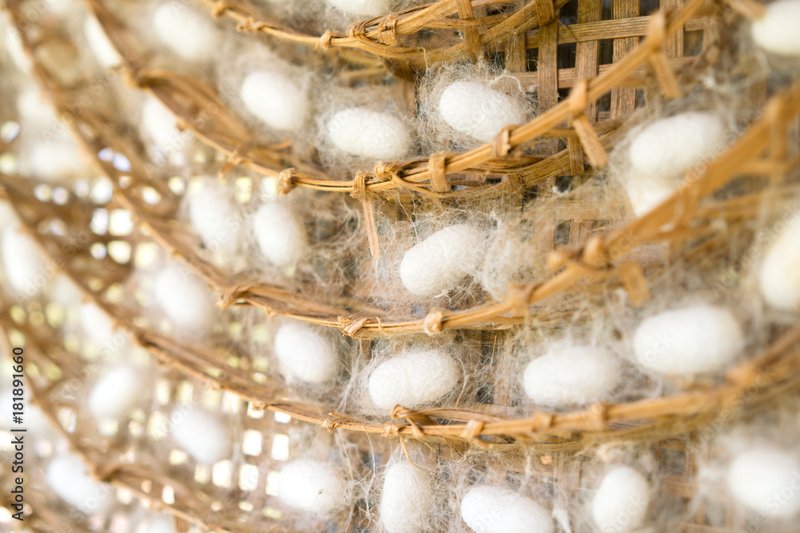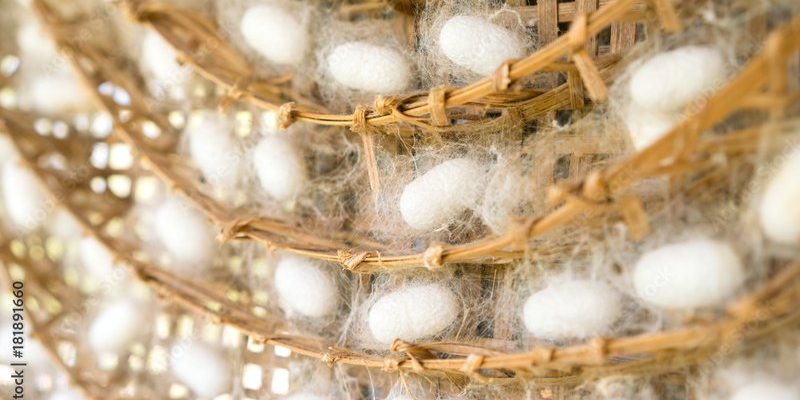
When we think about silk, we often picture elegant clothing or fancy decorations. But what’s behind this delicate fabric? Well, it all starts with those little critters known as silkworms. These humble insects play a gigantic role in one of the world’s oldest and most revered crafts. So, grab your favorite drink, sit back, and let’s dive into how this unique process has evolved over the millennia.
Origins of Silk Production
The history of silk dates back thousands of years, with origins believed to be in China around 2700 BC. Legend has it that Empress Leizu discovered silk when a cocoon fell into her tea. Curious, she pulled it out and saw how it unfurled into a long, shiny thread. Imagine the surprise and excitement! This chance encounter paved the way for a whole industry.
Initially used for clothing and ceremonial robes, silk quickly became a symbol of wealth and luxury. It was so valuable that it was often referred to as “the queen of fabrics.” Not just a pretty fabric, silk was also used for art, military uniforms, and even medical supplies due to its unique properties, such as strength and breathability. You might be wondering, how did this simple thread evolve into a global phenomenon?
The Silkworm Lifecycle
Silkworms are actually the caterpillar of the Bombyx mori moth, and their lifecycle is incredibly fascinating. It starts with the egg laid by a female moth. Within a week, these eggs hatch into tiny, ravenous larvae that go on a serious eating spree, munching on mulberry leaves day and night.
As they eat and grow, they molt several times, increasing in size. After about 4-6 weeks, they’re ready to start spinning their cocoons. The silkworm secretes a liquid protein that hardens into silk when it meets air, forming a protective casing around itself. This stage can take about 2-3 days. It’s like nature’s way of creating its own protective layer.
This is where the magic happens. Once the silkworms finish spinning their cocoons, they enter a pupal stage. Traditionally, to gather silk, the cocoons are boiled, allowing the long silk threads to be unwound. It’s a delicate balance, though—too much heat and they can ruin the silk, too little and it could be unusable.
The Silk Road: A Journey of Trade
The Silk Road is a name many of us are familiar with. It’s not just a singular road; it was a network of trade routes connecting the East and West, significantly impacting silk production. Starting in Han Dynasty China around the 2nd century BC, this network allowed silk to travel to distant lands.
As silk made its way across various cultures, it sparked demand and fascination. People in Persia, India, and later European regions were enchanted by its softness and luster. The silk trade brought not just fabric but also ideas, technologies, and goods from diverse cultures. Imagine the bustling markets filled with merchants showcasing silks alongside spices, gems, and other treasures! It created a cultural melting pot that transformed societies.
But here’s the thing: silk wasn’t just a luxury item—it was a status symbol. Many European nobles and royals sought silk to showcase their wealth. This high demand led to increased production and even the establishment of sericulture (the cultivation of silkworms) in various countries.
Sericulture: The Art of Silk Farming
Sericulture is the fascinating method of raising silkworms to produce silk. While initially a Chinese monopoly, this craft gradually spread to other regions, including Japan, India, and eventually Europe. Farmers began to refine their techniques to boost silk production, focusing on things like breeding and feeding.
In traditional sericulture, careful attention is paid to environmental conditions. Silkworms crave specific foods, mainly mulberry leaves. Farmers ensure the right conditions—temperature, humidity, and space—are met for optimal growth. Honestly, it’s a lot like gardening but with some extra steps.
After spinning their cocoons, farmers need to delicately extract the silk threads. This is often done by boiling the cocoons, which can be a delicate process. If the threads break, it can affect the quality of silk produced. Once unraveled, the silk threads are then dried and treated for further use.
Modern Advances in Silk Production
Fast forward to today, and silk production has come a long way. While traditional methods still exist, modern technology has introduced several innovations. For instance, mechanical spinning machines have become common, helping streamline the production process.
Furthermore, the rise of ethical concerns has led to the development of sustainable silk practices. These methods focus on the welfare of silkworms, often allowing them to complete their lifecycle before being harvested. This not only produces high-quality silk but also caters to consumers who are more conscious about what their purchases mean for animals and the environment.
Additionally, advancements in biotechnology have allowed researchers to explore alternatives to traditional silk production. Some companies are experimenting with bioengineered silk, which might offer a more sustainable option in the future. It’s remarkable to see how this ancient craft is adapting while still holding its rich traditions.
Silk Today: Cultural Significance and Uses
Silk remains a beloved fabric in various cultures around the globe. It’s not just about fashion; it plays a role in rituals, ceremonies, and even art. For example, in China, silk has significant cultural importance, often used in traditional dresses and wedding attire.
Additionally, silk is used in furnishings, like cushions and curtains, enhancing home decor with a touch of elegance. Artists also use silk in painting, creating beautiful artworks that showcase the fabric’s natural sheen. It’s exciting how silk’s versatility extends far beyond clothing.
Moreover, many regions now celebrate their distinctive silk weaving techniques, often showcasing them in festivals. These events keep the craft alive and allow communities to share their heritage with the world, ensuring that this beloved fabric continues to thrive in modern society.
The journey of silk production from silkworms to luxurious garments is nothing short of incredible. From ancient China’s humble beginnings to modern ethical practices, silk has woven itself into the very fabric of our cultural identity. It’s not just a piece of clothing; it’s a story, an art form, and a symbol of human ingenuity and persistence.
Whether you’re wearing a silk scarf or admiring silk art, you’re partaking in something truly ancient and beautiful. So, next time you touch that silky fabric, take a moment to appreciate the rich history behind it—one that has stood the test of time and continues to enchant us today.

